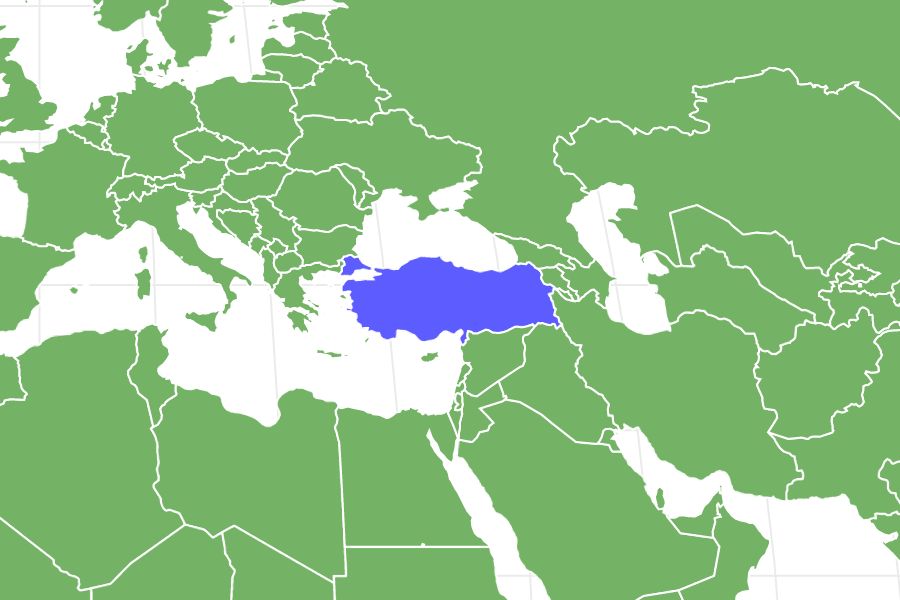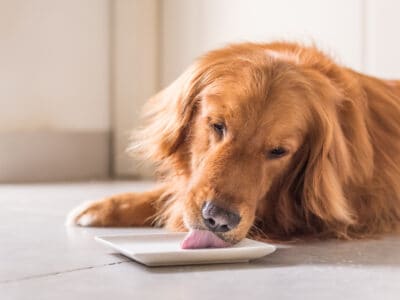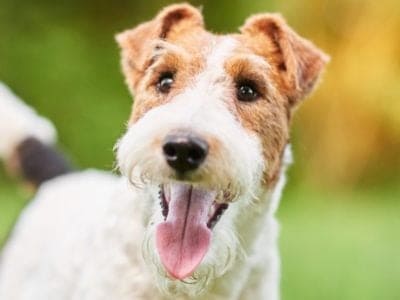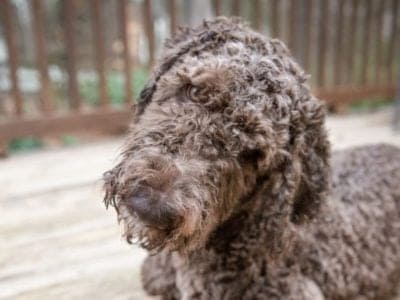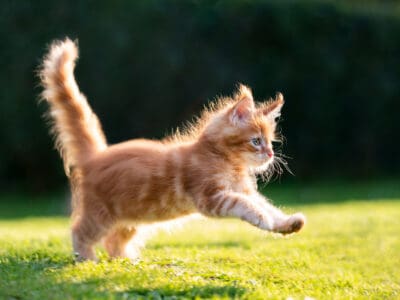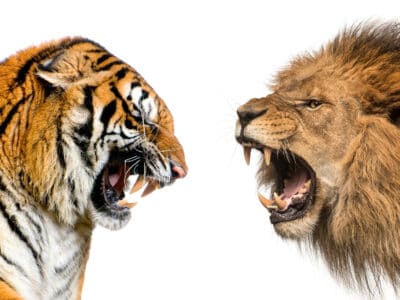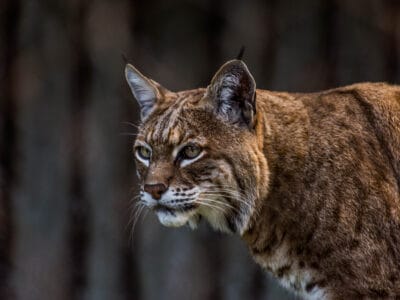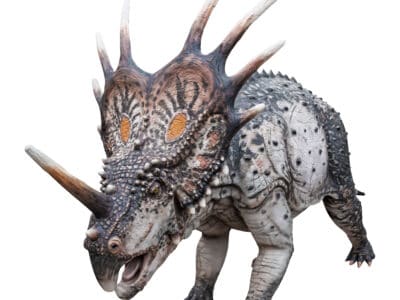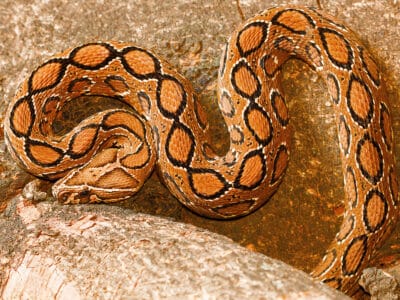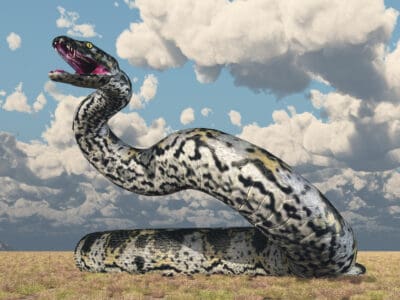Anatolian Shepherd Dog
.jumbotron {
background-image: url(“https://a-z-animals.com/media/2021/08/Anatolian-Shepherd-header-400×300.jpg”);
}
}
@media only screen and (min-width: 641px) and (max-width: 920px) {
.jumbotron {
background-image: url(“https://a-z-animals.com/media/2021/08/Anatolian-Shepherd-header-470×370.jpg”);
}
}
@media only screen and (min-width: 921px) {
.jumbotron {
background-image: url(“https://a-z-animals.com/media/2021/08/Anatolian-Shepherd-header.jpg”);
}
}
Anatolian Shepherd Dog
Canis lupus
Big livestock dogs possibly resembling the Anatolian Shepherd were mentioned in the Book of Job
Anatolian Shepherd Dog Scientific Classification
- Kingdom
- Animalia
- Phylum
- Chordata
- Class
- Mammalia
- Order
- Carnivora
- Family
- Canidae
- Genus
- Canis
- Scientific Name
- Canis lupus
Read our Complete Guide to Classification of Animals.
Anatolian Shepherd Dog Conservation Status
Anatolian Shepherd Dog Facts
- Fun Fact
- Big livestock dogs possibly resembling the Anatolian Shepherd were mentioned in the Book of Job
- Temperament
- Courageous, powerful, protective, calm and devoted.
- Training
- Should be trained from an early age and respond best to motivational training as they can be dominant and stubborn
- Litter Size
- 5-10 pups
- Diet
- Omnivore
- Average Litter Size
- 9
- Common Name
- Anatolian Shepherd Dog
- Slogan
- Guards it’s master’s flocks!
- Group
- Guard
.checked {
color: yellow;
}
Anatolian Shepherd Dog as a Pet:
- General Health
- Energy Level
- Shedability
- Trainability
- Intelligence
- Tendency to Chew
- Size
- Family and kid friendliness
- Yappiness / Barking
- High
- Separation Anxiety
- Low
- Preferred Temperature
- Cold climate
- Exercise Needs
- Moderate
- Friendly With Other Dogs
- Moderate
- Pure bred cost to own
- $2500
- Dog group
- Working
- Male weight
- 110-150 lbs
- Female weight
- 90-120 lbs
This post may contain affiliate links to our partners like Chewy, Amazon, and others. Purchasing through these helps us further the A-Z Animals mission to educate about the world’s species..

Spiders that fly! Fish that walk! And 1000+ more incredible animals. Discover them all for FREE
.photo-gallery {
–margin: 0px auto 0px;
–padding: 0px 0px 0px 0px;
}
.gallery-link {
background-image: url(“https://a-z-animals.com/media/2021/08/Anatolian-Shepherd-Isolated-1024×535.jpg”);
background-repeat: no-repeat;
background-size: cover;
background-position: center;
height: 500px;
justify-content: center;
text-align: center;
align-items: center;
display: flex;
border: 2px solid #000;
}
.gallery-link img {
height: 50%;
}
@media only screen and (max-width: 768px) {
.gallery-link {
height: 300px !important;
}
}
View all of the Anatolian Shepherd Dog images!
Beginning in the 1970s, with the passage of the Endangered Species Act, American ranchers used Anatolian Shepherd to deter endangered predators that threatened livestock, since they were illegal to kill.
The Anatolian Shepherd is a big, muscular breed of ancient guard dog that originated from what is now modern-day Turkey, perhaps as far back as 2000 BC. The dog’s original purpose was to guard the livestock, not to shepherd them. Thanks to its size and ferocity, it could stand up to aggressive predators like bears, coyotes, and wolves that might threaten the livestock.
See all of our expert product reviews.
The Anatolian Shepherd is characterized by long legs and neck, a curled up tail, a deep chest, drooping triangle-shaped ears, and a big skull. The short coat of fur is dense, particularly around the neck and limbs, with a fawn or white color and a black or brown mask around the face. This gives it a distinctive look, even among larger breeds.
button.pulse {
transform: scale(1); animation: pulse 2s infinite;
box-shadow: 0 0 0 0 rgba(11, 247, 25, 1);
}
@keyframes pulse {
0% { transform: scale(0.90); box-shadow: 0 0 0 0 rgba(11, 247, 25, 0.5); }
60% { transform: scale(1); box-shadow: 0 0 0 15px rgba(11, 247, 25, 0); }
100% { transform: scale(0.90); box-shadow: 0 0 0 0 rgba(11, 247, 25, 0); }
}
A quick note on the name: “Anatolian Shepherd” is kind of a catch-all term given to it when the dog arrived in the United States in the 20th century. It includes the Kangal Shepherd Dog and other related Turkish livestock breeds. “Kangal” comes from the name of a small town in central Turkey, where the breed was particularly popular for centuries.
3 Pros and Cons of Owning an Anatolian Shepherd
| Pros! | Cons! |
|---|---|
| Alert and Protective: The Anatolian Shepherd was bred to protect its “flock” from danger. | Suspicious of Strangers: The Anatolian Shepherd treats any unfamiliar person or animal with suspicion. |
| Loyal Toward Family: This breed displays a fierce loyalty toward its family. | Independent-minded: While independence serves it well out in the field, this might not necessarily be an endearing quality to some owners as a pet. |
| Intelligent: The Anatolian Shepherd scores highly on any intelligence ranking. | Reserved: While generally playful, the Anatolian Shepherd is not quite as outgoing and affectionate as other breeds. |
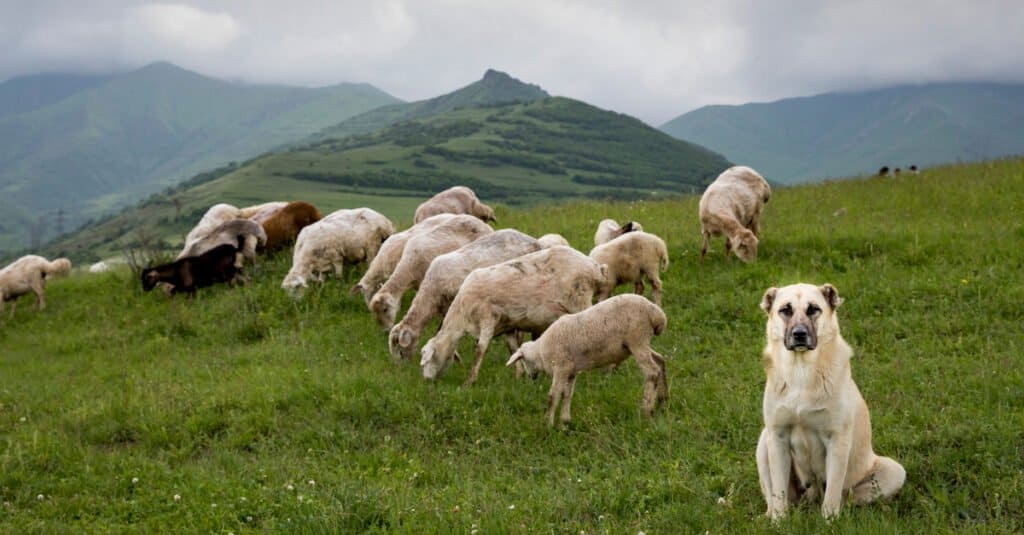
Katiekk/Shutterstock.com
Anatolian Shepherds Size and Weight
The Anatolian Shepherd is a large dog, weighing in at anywhere from 90 to 150 pounds. This livestock guardian has a thick coat of hair that adds weight to its body, making it look considerably heavier than it is, especially in the area of the mane. The color of this hair is usually either brown, red, tan, or white, and the dog often has a blend of one of these colors together with black on its face and ears.
It needs to be brushed about once a week most of the year to get rid of the heavy coat that would otherwise fall off over time. Twice a year it will need more brushing to get rid of the coat that is coming out. The dog may ignore strangers if it has not been properly socialized, so if you are interested in one of these it is best if you socialize it well from the beginning.
Health and Entertainment for your Anatolian Shepherd Dog
See all of our expert product reviews.
| Height (Male): | 29 inches |
| Height (Female): | 27 inches |
| Weight (Male): | 110 to 150 pounds |
| Weight (Female): | 80 to 120 pounds |
Anatolian Shepherd Common Health Issues
For a dog of this size, the Anatolian Shepherd has a decent lifespan of around 11 to 13 years, but it still may be at risk of developing several health problems, including demodicosis mange (skin and fur issues caused by an infestation of mites), entropion (in which the hair from the eyelash grows backward and irritates the surface of the eye), dysplasia (a deformed joint), and cancer (a leading cause of death). Bloating, a life-threatening condition that results from the buildup of excess gas or food in the stomach usually isn’t a big problem with this breed, but owners should know the symptoms, like excess salivating or an enlarged abdomen, so you can act quickly when it arises.
Good breeders will always test their dogs for common developmental and genetic disorders, so you should always ask the breeder for proof of a positive health assessment. After bringing your dog home, you should also schedule regular visits to the vet to check for common health problems. In summation, these are the most common health problems of an Anatolian Shepherd:
- Demidicosis mange
- Entropion
- Cancer
- Dysplasia
Anatolian Shepherd Temperament
First and foremost, the Anatolian Shepherd is an excellent guardian and protector; all of its natural instincts were bred for this purpose. It has an alert and protective personality and regards anyone within the close family as its “flock” to be guarded. This also means the dog is very suspicious and wary of strangers. While a properly socialized dog won’t exhibit too much aggressive behavior, it will take a lot of time and effort for this breed to accept unfamiliar people and animals. Once it becomes part of the family, though, this breed should be a calm and devoted companion.
How to Take Care of the Anatolian Shepherd
Due to their enormous size, independent nature, and somewhat difficult care, the Anatolian Shepherd probably isn’t recommended for novice owners. It requires a strong but understanding leader who knows how to work with their unique quirks. This breed also is not very well-suited for apartment living either. If you have any other questions or concerns about this dog, then you should consult with your vet.
The Best Dog Food for Anatolian Shepherds
Anatolian Shepherds are quite a furry breed, and they can experience skin and fur problems. In the event of excess shedding, it’s a good idea to check out some dog foods that help address shedding. This breed can also be susceptible to dangerous bloat, so careful feeding is crucial. Some experts believe that wet food is preferable for preventing bloat, since it won’t absorb liquid like kibble.
So, A-Z Animals recommends Purina Pro Plan Sensitive Stomach Pate Wet Dog Food, FOCUS Sensitive Skin & Stomach Salmon & Rice Entree to supply Anatolian Shepherds with the nutrition they need.
This balanced dog food has linoleic acid to keep the skin and coat in prime condition, with additional omega fatty acids, rice/oat meal, and prebiotic fiber for digestion.
Purina Pro Plan for Sensitive Skin and Stomach is available on amazon.
- Twelve (12) 13 oz. Cans – Purina Pro Plan Sensitive Skin and Stomach Dog Food Pate, Sensitive Skin and Stomach Salmon and Rice Entree
- High protein dog food made with real salmon for a taste dogs love and easily digestible rice, which is gentle on the digestive system
- Natural prebiotic fiber in our salmon and rice dog food formula nourishes specific intestinal bacteria for digestive health
- Sensitive skin dog food includes linoleic acid, an omega fatty acid, for healthy skin and coat and contains no artificial colors, flavors or preservatives
- High protein level in digestive dog food helps him maintain lean muscles, while the highly digestible formula supports optimal nutrient delivery
An adult Anatolian Shepherd will probably need around 3 to 4 cups of high-quality dog food per day, which may vary based on age, size, and activity level. This breed does not tend to overeat, but treats and snacks should be nonetheless limited.
Maintenance and Grooming
While this breed doesn’t require any special grooming techniques, it should receive weekly brushing to deal with loose hair and prevent matting. During the shedding season, brushing should ideally occur at least once a day. The Anatolian Shepherd will also need the occasional nail trims (maybe once every four to six weeks), regular ear checks, and teeth brushings with a healthy vet-approved toothpaste.
Training
This breed scores highly on intelligence rankings and has the ability to learn commands relatively quickly, but it is by no means an easy dog to train. It’s independent-minded, relentlessly driven, and always seeking to dominate and become the leader, so obedience training is an absolutely necessity as early as possible. This breed needs a consistent and assertive presence (combined with positive reinforcement methods) to properly guide it. Keep in mind that there is only so much training can do; at some level, its instincts are always ingrained. If you are having trouble, then you might want to hire the services of a professional trainer.
Exercise
The Anatolian Shepherd is an athletic breed that needs at least an hour of exercise every day in the form of long walks, hikes, jogs, toys, games, fetching, and other playtimes. This breed will benefit from access to a large fenced yard with a locked gate. When walking your dog, make sure it is tethered to a leash at all times. Its behavior can be somewhat unpredictable.
Anatolian Shepherd Puppies
Anatolian Shepherds are big, fast-growing puppies. Because their bones and joints take time to fully develop, it’s recommended to limit the amount of time your dog spends playing or running on hard surfaces for the first year or so of its life. Early obedience training and socialization are necessary with these puppies. Even if their instincts remain strong, it will help them become comfortable around new people and situations. Crate training can also help ease anxiety and assist with house training.
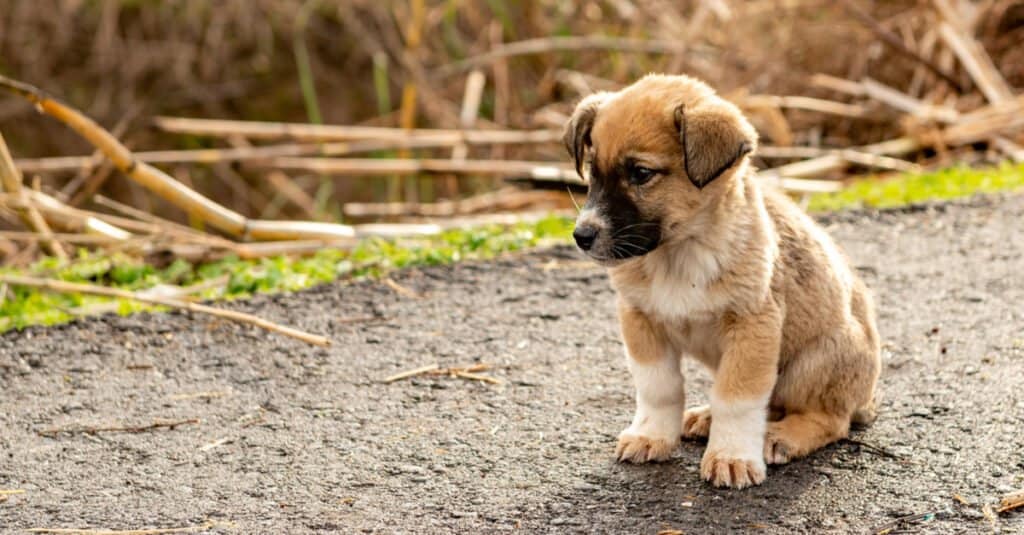
Ender BAYINDIR/Shutterstock.com
The Anatolian Shepherd and Children
This breed is surprisingly gentle for its size and should get along very well with any children it’s been reared with. Older children are generally better because they can take on the responsibility of caring for a large dog.
Unfortunately, due to its naturally protective tendency, this breed might regard other children with suspicion. Any such interactions between your dog and your children’s playmates should be carefully supervised by an adult at all times.
Dogs Similar to the Anatolian Shepherd
If you’re looking for a dog similar to the Anatolian Shepherd, then you should check out one of the following livestock guardians:
- Pyrenean Mountain Dog – Originating from the French side of the Pyrenean Mountains, the Great Pyrenees, as it’s also called, was first bred to protect its flocks from dangerous predators. Today, it also works as a pet and overall good companion. The thick double coat of fur is white all over, but it may have patches of black, tan, or gray.
- Kuvasz – This big, strong, Hungarian breed has served a dual purpose for centuries as both a livestock guardian and as a pet for royalty. The thick double coat is white or ivory white and generally lacks patches, spots, or markings of any kind.
- Caucasian Shepherd Dog – Originating from the Caucasian mountains region, this is another large livestock guardian with a naturally protective temperament. It comes in many different colors with a solid, spotted, or piebald pattern.
Famous Anatolian Shepherd Dogs
This breed ranks average in terms of popularity in the United States, but it has appeared in numerous films, including the 2001 romantic comedy Kate and Leopold, the 2001 children’s film Cats & Dogs (in which it was voiced by Alec Baldwin), and the 2000 comedy Road Trip.
Popular Names
If you are still searching for a good name for your new Anatolian Shepherd, then you might want to consider one of the following options:
- Bear
- Aslan
- Sabir
- Duke
- Dora
- Zeya
- Tara
- Teddy
- Riley
Last update on 2022-07-06 / Affiliate links / Images from Amazon Product Advertising API
View all 127 animals that start with A
Anatolian Shepherd Dog FAQs (Frequently Asked Questions)
What is an Anatolian Shepherd?
The Anatolian Shepherd is a big, strong livestock guardian originating from what’s now modern-day Turkey. While very loyal toward family, it’s also suspicious and wary of strangers and needs to be socialized early on. This breed scores very high on intelligence rankings, but it’s also independent-minded and somewhat difficult to train. It has a lifespan of around 11 to 13 years.
Is an Anatolian Shepherd a good family dog?
The Anatolian Shepherd should be naturally protective toward members of the family, but it might need time to become comfortable with people.
Are Anatolian Shepherds dangerous?
The Anatolian Shepherd does have a natural tendency to become aggressive toward anything it perceives as a threat. Proper obedience training and socialization from an early age will teach it to be calm around strangers.
How much does an Anatolian Shepherd cost?
The price of a newborn Anatolian Shepherd from a high-quality breeder will normally be somewhere between $500 and $1,500, in addition to the price of food, toys, and optional things like a crate. You can count on paying a lot more than this for a dog with an excellent pedigree. If price is a concern, however, then you might want to consider adopting a dog from a shelter or rescue. There are some rescue groups across the country specifically dedicated to the Anatolian Shepherd. Otherwise, you might have to get lucky at a general rescue.
Is an Anatolian Shepherd a mastiff?
While there are certainly some similarities between them, such as the large size, short coat, and working characteristics, the Anatolian Shepherd is not generally regarded as a type of mastiff. Livestock guardians are closely related but distinct. The evidence suggests that the livestock guardians were developed first, and the mastiffs may have been developed from them.
What are the most common mixed breed Anatolian Shepherds?
The most common mixes are the Anatolian Pyrenees (a Pyrenean mix), a German Anatolian Shepherd (a German Shepherd mix), and a Plush Danois (a Great Dane mix).
What’s the difference between an Anatolian shepherd and a Kangal?
Anatolian shepherds differ from Kangals in coloring as well as size. However, many people consider them the same breed of dog.
What’s the difference between an Anatolian Shepherd and a Great Pyrenees?
The key difference between the Anatolian Shepherd and Great Pyrenees is their appearance, including coat length, color, and size.
Other differences include lifespan, temperament, trainability, and drooling level.
Sources
- American Kennel Club, Available here: https://www.akc.org/dog-breeds/anatolian-shepherd-dog/
- American Kennel Club, Available here: https://www.akc.org/expert-advice/lifestyle/8-facts-about-the-anatolian-shepherd-dog/
- Dog Zone, Available here: https://www.dogzone.com/breeds/anatolian-shepherd/

